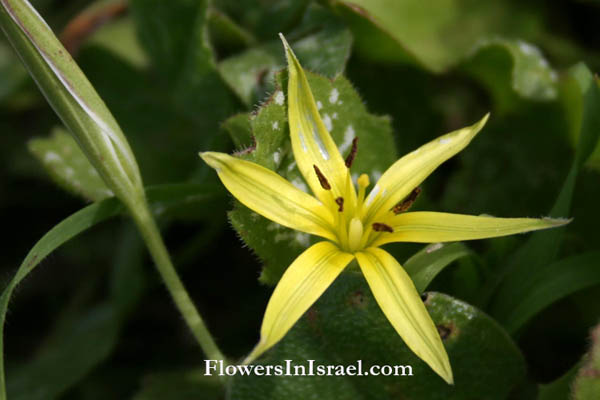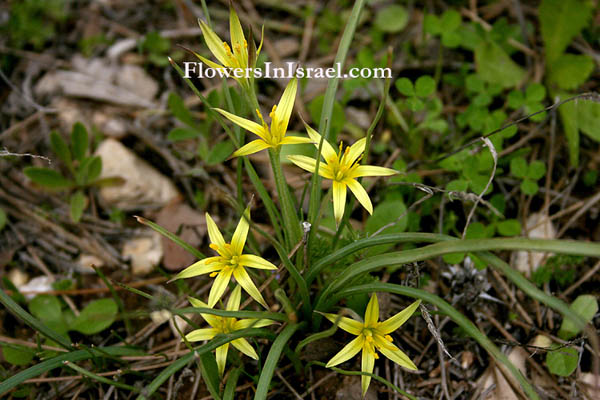Hebrew: זהבית השלוחות, Arabic: شحوم
| Scientific name: | Gagea commutata K.Koch | |
| Synonym name: | Gagea reticulata var. commutata (K.Koch) Miscz. | |
| Common name: | Stolonous Gold-crocus | |
| German name: | Gelbstern | |
| Hebrew name: | זהבית השלוחות | |
| Arabic name: | شحوم | |
| Family: | Liliaceae, שושניים |

|
| Life form: | Geophyte | |
| Stems: | 8-14 cm tall; very elongated peduncle | |
| Leaves: | Rosette, entire, two basal leaves flattened but narrow to 2mm, cauline leaves 3-5, verticillate | |
| Inflorescence: | 1-6 flowers; very elongated peduncle | |
| Flowers: | Yellow; very long-acuminate tepals (2-3 cm); 6 stamens; the color of the pollen is brown-orange | |
| Fruits / pods: | Loculicidal capsule | |
| Flowering Period: | February, March | |
| Habitat: | Batha, Phrygana | |
| Distribution: | Mediterranean Woodlands and Shrublands, Semi-steppe shrublands | |
| Chorotype: | Irano-Turanian | |
| Summer shedding: | Ephemeral |

Derivation of the botanical name: Gagea, named for Sir Thomas Gage (1761 - 1820), Hengrave Hall, Suffolk, who botanized in Ireland and Portugal. commutata, changed or changing.
|